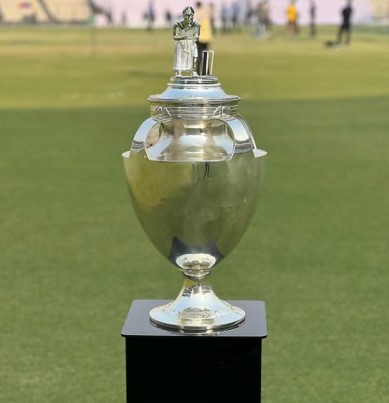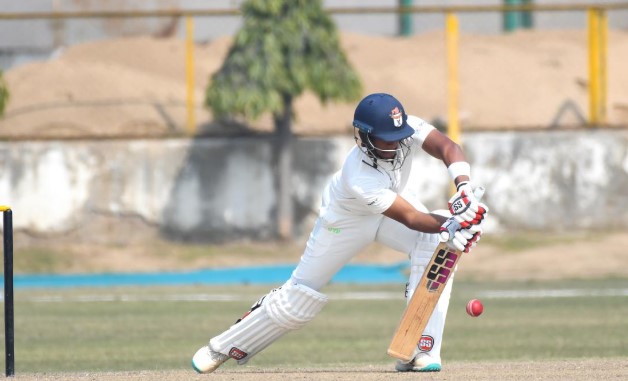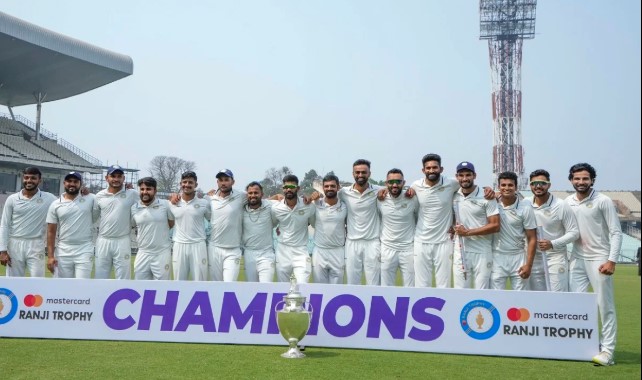The Ranji Trophy, named after the famous cricketer Sir Ranji (Ranjitsinhji), is the premier domestic cricket competition in India. Established in 1934, it holds a prestigious place in Indian cricket history and is a critical platform for young cricketers to make their mark on the national stage. The tournament is vital for the selection of players for the national team, as it serves as a proving ground for aspiring cricketers to showcase their talent.
Origins And History

The Ranji Trophy was conceptualized in 1934 when the Board of Control for Cricket in India (BCCI) decided to organize a domestic cricket competition for Indian states and regions. Sir Ranjitsinhji, the former England cricketer of Indian origin, was honored by having this tournament named after him due to his immense contribution to the sport. Sir Ranji played a significant role in elevating Indian cricket to international standards, and this tournament became a fitting tribute to his legacy.
Initially, the tournament featured regional teams from different parts of India, and over time, it expanded to include more teams, covering a diverse range of regions. The competition has evolved to become an essential fixture in the Indian cricket calendar.
Format Of The Tournament
This follows a league format that includes various stages of competition. Teams are divided into different groups based on regions, and each group plays a set of league matches. The top teams from each group advance to the knockout rounds, culminating in the final, where the winner is crowned the champion.
Here’s a breakdown of the key stages of the Ranji Trophy:
- Group Stage: The competition begins with the group stage, where teams are divided into groups based on their geographical locations. Each group competes in a round-robin format, where every team plays against every other team in their group. Points are awarded based on match results.
- Knockout Stage: The top teams from each group qualify for the knockout stage, which includes the quarterfinals, semifinals, and the final. These matches are played in a single-elimination format.
- Final: The final match determines the champion of the Ranji Trophy. The winner of the final is awarded the prestigious trophy, which marks their success in the competition.
Format Overview
| Stage | Description |
|---|---|
| Group Stage | Teams play in a round-robin format in regional groups. |
| Knockout Stage | Top teams from each group advance to quarterfinals, semifinals, and final. |
| Final | The final match determines the Ranji Trophy champion. |
The Evolution Of The Ranji Trophy

The Ranji Trophy has undergone numerous changes since its inception, adapting to the growth of Indian cricket. Initially, it was played in a longer format, with matches extending over several days. However, in recent years, there has been a trend toward more dynamic and competitive formats.
The tournament has seen several notable players rise to prominence, many of whom later became household names in Indian cricket. Over the decades, the Ranji Trophy has produced some remarkable performances that have shaped the course of Indian cricket. Legends like Sunil Gavaskar, Kapil Dev, Anil Kumble, and more recently, Ajinkya Rahane, have all featured prominently in the competition.
The introduction of regional-based teams led to a diverse range of playing styles and strategies, with teams from different regions having unique approaches to the game. Additionally, the Ranji Trophy has witnessed the rise of a variety of cricketing talents from across the country.
The Impact Of The Ranji Trophy On Indian Cricket
- Talent Discovery and Development: The Ranji Trophy has consistently served as a launching pad for emerging cricketers in India. Players like VVS Laxman, Cheteshwar Pujara, and Ravichandran Ashwin made their names in domestic cricket before transitioning to the national team. The competition allows players to showcase their abilities under pressure, making it a crucial step in the journey to international cricket.
- Regional Representation: Unlike many other international tournaments, the Ranji Trophy offers representation to regional cricket teams. The representation of diverse regions allows for the cultivation of local talent and provides opportunities for players from all parts of India, including remote areas, to be scouted and nurtured.
- Rivalries and Historic Matches: The Ranji Trophy has given rise to some intense rivalries, including the long-standing battles between teams like Mumbai, Delhi, Tamil Nadu, and Karnataka. These rivalries have produced historic matches that have captured the imagination of cricket fans.
- Professionalism in Domestic Cricket: The structure of the Ranji Trophy has helped improve the overall professionalism of domestic cricket in India. Players now have access to better facilities, coaching, and support systems that enable them to improve their skills and prepare for higher levels of competition.
Top Ranji Trophy Teams
| Team | Number of Titles (as of 2023) |
|---|---|
| Mumbai | 41 |
| Karnataka | 8 |
| Delhi | 7 |
| Tamil Nadu | 6 |
| Hyderabad | 6 |
| Uttar Pradesh | 4 |
Notable Players And Their Impact

The Ranji Trophy has been a breeding ground for cricketing greats, and it is no surprise that many of India’s top players have come through this competition. Some of the most prominent players who have made their mark in the Ranji Trophy include:
- Sunil Gavaskar: One of India’s greatest batsmen, Gavaskar’s career began in the Ranji Trophy with Mumbai. His performances in the domestic competition were vital in his rise to international cricket.
- Kapil Dev: The legendary all-rounder and captain of the Indian team, Kapil Dev’s career took off in the Ranji Trophy, where he represented Haryana and became one of India’s most successful players.
- Anil Kumble: Kumble’s rise to prominence began with his performances in the Ranji Trophy for Karnataka. His legendary career as a spinner in international cricket was built on the foundation laid in domestic cricket.
- VVS Laxman: Laxman’s elegant batting style was honed in the Ranji Trophy, where he played for Hyderabad. His calm demeanor and technical proficiency earned him a spot in the national team.
- Ravichandran Ashwin: Ashwin’s rise as one of the world’s premier spinners was aided by his impressive domestic performances in the Ranji Trophy, where he represented Tamil Nadu.
The Future Of The Ranji Trophy
The Ranji Trophy continues to evolve and adapt to the changing landscape of Indian cricket. With the rise of the Indian Premier League (IPL) and the increasing demand for players who are adept at limited-overs formats, there has been a shift in focus towards shorter formats of the game. However, the importance of the Ranji Trophy remains undiminished, as it continues to nurture the next generation of cricketers for international success.
Moreover, the increasing financial investment in domestic cricket, both from the BCCI and sponsors, has made the Ranji Trophy a more lucrative and competitive tournament. The future of the Ranji Trophy will likely see more enhancements in infrastructure, coaching, and technology, providing cricketers with even better resources to hone their skills.

The Ranji Trophy has undoubtedly earned its reputation as one of the most prestigious cricket tournaments in the world. It has been integral in the development of Indian cricket, offering a platform for cricketers to showcase their talent and rise through the ranks to represent the country at the highest level.
As Indian cricket continues to grow in stature on the global stage, the Ranji Trophy will remain a cornerstone of domestic cricket, continuing to produce world-class cricketers for years to come. Through its rich history and legacy, the Ranji Trophy stands as a true testament to India’s cricketing heritage.
